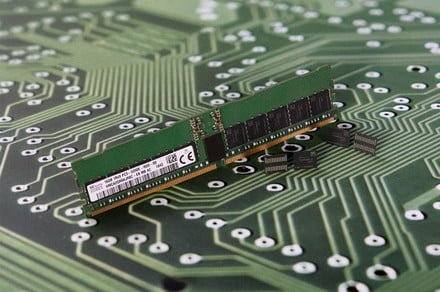SK Hynix’s 16GB DDR5 module. SK Hynix
Memory prices have been sky high for the past couple of years. They’re finally coming down to more reasonable levels, but it’s alright time to look to the future. Major manufacturers will soon release their first DDR5 (double data rate 5) memory modules bringing increased bandwidth and lower power draw to the table. They are likely to be expensive out of the gate, as new memory standards typically are, but they’ll usher in a new generation of high speed memory that will be hard to beat with existing standards.
Confused about what RAM, memory, or DDR5 actually is? We explain it all in our guide to memory.
Pricing and availability
Following years of teases, major memory manufacturers, Samsung and SK Hynix both announced in early 2019 that there would be DDR5-based products out before the end of the year. Both companies made their announcements at the International Solid-State Circuits Conference and provided some basic details about what the new standard will be like.
Samsung mostly focused on discussing the implementation of DDR5 in mobile devices, while SK Hynix was more keen to explore the potential of DDR5 in desktop and laptop PCs. Both claimed that we’d see the new memory implemented in devices and systems before the end of the year.
Cost wasn’t mentioned, but typically new memory standards cost more than their predecessors. While the RAM shortage of recent years shook up that typical paradigm, large capacities are still the most expensive memory you can buy. Since DDR5 is far denser and enables greater quantities of memory in similar form factors to DDR4, it will likely be more expensive as well.
That means the proliferation of DDR5 will take some time. SK Hynix has said it expects DDR5 to make up 25 percent of the memory market by 2021, and 44 percent in 2022.
Power and performance
Independent trade and standards body, JEDEC, still hasn’t ratified an official specification for DDR5, even though it’s been working on it for years. We do have an official standard for Low-Power DDR5 (LPDDR5), which doubles the base speed over LPDDR4 from 3,200 MT/s (mega transfers per second) to 6,400 MT/s. Typically, low-power memory is used in smartphones and tablets and requires less power to operate. Its speeds tend to be comparable to standard DDR, though, so we can assume that at the very least, DDR5 will operate at up to 6,400 MT/s.
In more colloquial terms, that could mean we’ll see DDR5 memory kits that can reach 6,400MHz for enthusiast parts. That will only be the beginning though, as DDR4 modules can already reach over 5,500MHz with overclocking.
We should see a wide range of DDR5 eventually, with different frequency and timing options. How broad that range will be remains to be seen and it will likely expand in years to come as prices come down and third parties are able to push the chips to new heights.
What we do know, though, is that SK Hynix’s first DDR5 modules will operate at 6.4Gb/s on each pin while requiring 1.1V, as TechSpot reported in February. That’s notable for its reduction in power requirements, as much as its high speed. DDR4 typically requires between 1.2v and 1.4v — and even higher for overclocks.
It may be that DDR5 is even more capable of reducing power demands than that though. Samsung’s showcase of a 10nm LPDDR5 module demonstrated a module that could operate a 7.5Gbps at just 1.05v. Details beyond that are slim at this time, but add further evidence that DDR5 will significantly improve the performance capabilities of memory, while reducing power requirements by a sizeable margin.
Capacity
G.Skill
Alongside a doubling of performance, DDR5 is also expected to double the density of DDR4. That should mean we’ll see single sticks of DDR5 with up to 32GB capacities. That should allow for greater memory module sizes in smaller form-factor systems, support for greater capacities will be dependent on CPUs and chipsets which can take advantage of it. The 28-core Intel Xeon W-3175X can support kits up to 192GB in size, which some memory providers have supported with $3,000+ kits made up of 12 x 16GB sticks.
We may see 6 x 32GB kits in the future. But more importantly, we could see 64GB in two-stick kicks, which would be perfect for smaller systems and motherboards with limited DIMM slots.
Editors’ Recommendations
- Razer Blade (2019) review
- Intel Ice Lake CPUs: Everything you need to know
- Every gaming laptop that was announced at CES 2019, ranked
- ‘Anthem’: Everything we know about Bioware’s next game
- Ring Stick Up Cam Wired Review

